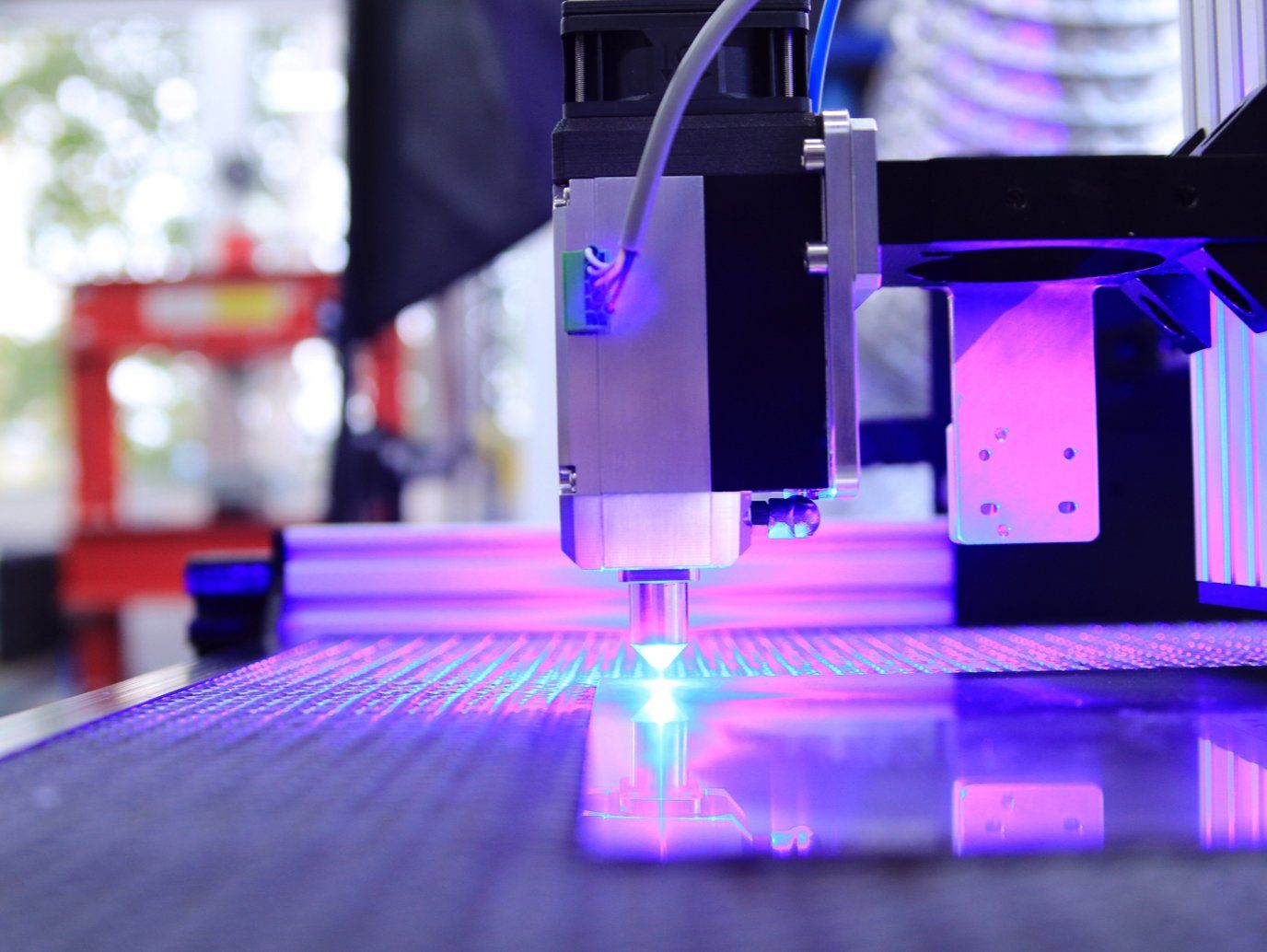20 - 24 June 2022
Nations are relying on the private sector in space, which is why we must continue to support them

Rocket Lab hope to achieve a real milestone for commercial space (image: Rocket Lab)
Another busy week for innovation; rocket launches, the beginnings of some rather significant missions and the rapid growth of sustainable space manufacturing. National space agencies continued with their ambitious plans in space, with updates on NASA’s Artemis mission, new launches in China, and activity from emerging space nations. Space startups continue to provide innovative technology for national space missions, and 3D printing technology is playing an increasingly important role in building the new space economy.
Australia and Korea add to growing list of spacefaring nations
There’s a growing list of space nations, developing independent launch capabilities, backed by a strengthening private sector. Korea are the latest country to launch satellites into orbit, using their own rocket technology, becoming the 7th nation to do so. Australia also announced plans to develop their own independent launch capabilities, with Gilmour Space Technologies revealing plans to send Australian astronauts into space within ten years, launched from Australian soil.
The UK is still on track to carry its first launch from British soil this summer, with Virgin Orbit delivering a payload of satellites, including a prototype space factory from Welsh company Space Forge. The company plans on producing lighter metal alloys and super-efficient semiconductors in space and return them to Earth.
China have announced plans to retrieve Martian rock samples and deliver them back to Earth, in a mission that could beat NASA by two years. The China Academy of Space Technology will also begin experiments on an orbital solar power station, using microwave technology to beam the energy back to Earth. They plan to be able to power a whole city using this tech by 2050.
NASA also announced new innovations, working with Aerospace Corp on new DiskSats. The satellites would only be meter in diameter and 2.5 centimetres thick, with more surface area for solar panels. NASA have also announced projects with three different teams on developing nuclear power reactors for the surface of the moon, with participants from Lockheed Martin, Aerojet Rocketdyne and Boeing. The ESA have have also said that they will be working with Belgian company Tractebel to research dynamic radioactive power systems for space vehicles.
Artemis-1 has come a step closer to launching by completing a rehearsal countdown, and despite NASA saying the dress rehearsal wasn’t perfect, it was good enough to prepare for launch.

3D printing playing a key role in new space (image: Unsplash)
Private sector and space startups are taking us to our future
WThe private sector is proving to be the backbone of the blooming space economy, with governments and national agencies becoming more reliant on their technology. Software startup Epsilon3 announced $15 million investment to expand the capabilities of their space project management software. One fifth of orbital launches used this technology in the US in the year so far.
Space debris removal company Astroscale have announced a mission in 2024. The Japanese company, funded by the UK and ESA, will partner with OneWeb on an “end-of-life-servicing” mission. Debris removal and orbital logistics seem to be set to become a huge growth sector in itself. Similarly, Italian space logistics company has partnered with launch provider Isar Aerospace from Germany, in order to deploy their orbital transfer vehicle into geosynchronous orbit.
Rocket Lab also look to be set to launch their Electron rocket on the 27th June, carrying the CAPSTONE lunar orbiter, a first step towards the ambitious Lunar Gateway plan. This is also the first time a commercial, liquid-fuelled rocket will transport a payload to the moon, and the beginnings of humankind’s plans to colonise the moon. This could be quite an understated milestone in space exploration.
3D Printing Tech is the future of space manufacturing
The use of 3D printing technology is going to be crucial for the future of space exploration. In-situ manufacturing removes the costly and time-consuming effort of launching from Earth, and significantly reduces design and development time. There were several examples of this transformative technology this week.
Copehangen-based SGA Space Architects have employed the technology in developing lunar habitats, capable of housing 2 astronauts for up to 90 days. The design and development for the habitat took only 9 months. Scientists from the Laser Zentrum Hannover e.V. (LZH) and the Technische Universitat Berlin are also panning to use laser technology to melt lunar dust. They hope the technology can be used to create landing sites and roads on the moon, as well as use the produce in 3D printing.
ETH University in Zurich have also used 3D printing to develop a prototype “hopping” space robot for exploring asteroids, designed to analyse asteroids for valuable resources.
Skyrora, based in the UK, have also passed tests for their 3D printed rocket engine, a project contracted by the ESA. Similarly, Relativity Space have transported their 3D printed rocket to a launchpad in Cape Canaveral, moving closer to the first launch attempt of the Terran-1 rocket.
Propulsion startup Plasmos have been able to carry out tests of their rocket engine thanks to investment from additive technology company Velo3D, a metal 3D manufacturing startup who have also worked with SpaceX. 3D printing is going to play a key role in our future in space.
Nations are relying on the private sector in space, which is why we must continue to support them
This week has been a fine example of national space ambitions being backed by the commercial sector, and it’s clear that we can only achieve our goals, for humanity, using the innovation and talent of the private sector. But it’s important that this talent is nurtured, encouraged and supported. Furthermore, it’s vital that these innovations are not used to the detriment of humankind, and for the benefit of the few.
An article from the McKinsey group highlighted the importance of this support in the European sphere, noting that there is significantly less investment in space startups in Europe, compared to the US. We also have to consider talent and innovation coming from developing nations, and how it can be encouraged. It’s only through encouragement and collaboration we can maximise our potential in the new space economy.
The private sector will become a powerful force, and it is already. As we are seeing new and old rivalries develop in space, it would be upsetting to see private industry growth being stunted due conflict and division, or even worse, being used as part of it. Conversely, the private sector could be a force for good, committing to peaceful space, setting an example for other stakeholders to follow. As we mentioned last week, it was suggested at the recent COPUOS meeting that “The view was expressed that the Committee should consider new and innovative ways to best engage relevant stakeholders, such as those from industry, academia and civil society, in its activities”. Surely, as the private sector carries the industry forwards, they deserve to have their voices heard. We hope to have a comprehensive report of the COPUOS meeting published soon.
A peaceful space encourages new startups and new talent to enter the sector and gives investors the confidence to provide much needed capital. With the threat of conflict, businesses suffer, and the new space economy can’t flourish. Perhaps businesses can help us all achieve our goals of peaceful uses of outer space.
External Links
This Week
*News articles posted here are not property of ANASDA GmbH and belong to their respected owners. Postings here are external links only.
Our future in space

Rocket Lab hope to achieve a real milestone for commercial space (image: Rocket Lab)
20 - 24 June, 2022
Nations are relying on the private sector in space, which is why we must continue to support them
Another busy week for innovation; rocket launches, the beginnings of some rather significant missions and the rapid growth of sustainable space manufacturing. National space agencies continued with their ambitious plans in space, with updates on NASA’s Artemis mission, new launches in China, and activity from emerging space nations.
Space startups continue to provide innovative technology for national space missions, and 3D printing technology is playing an increasingly important role in building the new space economy.
Australia and Korea add to growing list of spacefaring nations
There’s a growing list of space nations, developing independent launch capabilities, backed by a strengthening private sector. Korea are the latest country to launch satellites into orbit, using their own rocket technology, becoming the 7th nation to do so. Australia also announced plans to develop their own independent launch capabilities, with Gilmour Space Technologies revealing plans to send Australian astronauts into space within ten years, launched from Australian soil.
The UK is still on track to carry its first launch from British soil this summer, with Virgin Orbit delivering a payload of satellites, including a prototype space factory from Welsh company Space Forge. The company plans on producing lighter metal alloys and super-efficient semiconductors in space and return them to Earth.
China have announced plans to retrieve Martian rock samples and deliver them back to Earth, in a mission that could beat NASA by two years. The China Academy of Space Technology will also begin experiments on an orbital solar power station, using microwave technology to beam the energy back to Earth. They plan to be able to power a whole city using this tech by 2050.
NASA also announced new innovations, working with Aerospace Corp on new DiskSats. The satellites would only be meter in diameter and 2.5 centimetres thick, with more surface area for solar panels. NASA have also announced projects with three different teams on developing nuclear power reactors for the surface of the moon, with participants from Lockheed Martin, Aerojet Rocketdyne and Boeing. The ESA have have also said that they will be working with Belgian company Tractebel to research dynamic radioactive power systems for space vehicles.
Artemis-1 has come a step closer to launching by completing a rehearsal countdown, and despite NASA saying the dress rehearsal wasn’t perfect, it was good enough to prepare for launch.

3D printing playing a key role in new space (image: Unsplash)
Private sector and space startups are taking us to our future
The private sector is proving to be the backbone of the blooming space economy, with governments and national agencies becoming more reliant on their technology. Software startup Epsilon3 announced $15 million investment to expand the capabilities of their space project management software. One fifth of orbital launches used this technology in the US in the year so far.
Space debris removal company Astroscale have announced a mission in 2024. The Japanese company, funded by the UK and ESA, will partner with OneWeb on an “end-of-life-servicing” mission. Debris removal and orbital logistics seem to be set to become a huge growth sector in itself. Similarly, Italian space logistics company has partnered with launch provider Isar Aerospace from Germany, in order to deploy their orbital transfer vehicle into geosynchronous orbit.
Rocket Lab also look to be set to launch their Electron rocket on the 27th June, carrying the CAPSTONE lunar orbiter, a first step towards the ambitious Lunar Gateway plan. This is also the first time a commercial, liquid-fuelled rocket will transport a payload to the moon, and the beginnings of humankind’s plans to colonise the moon. This could be quite an understated milestone in space exploration.
3D Printing Tech is the future of space manufacturing
The use of 3D printing technology is going to be crucial for the future of space exploration. In-situ manufacturing removes the costly and time-consuming effort of launching from Earth, and significantly reduces design and development time. There were several examples of this transformative technology this week.
Copehangen-based SGA Space Architects have employed the technology in developing lunar habitats, capable of housing 2 astronauts for up to 90 days. The design and development for the habitat took only 9 months. Scientists from the Laser Zentrum Hannover e.V. (LZH) and the Technische Universitat Berlin are also panning to use laser technology to melt lunar dust. They hope the technology can be used to create landing sites and roads on the moon, as well as use the produce in 3D printing.
ETH University in Zurich have also used 3D printing to develop a prototype “hopping” space robot for exploring asteroids, designed to analyse asteroids for valuable resources.
Skyrora, based in the UK, have also passed tests for their 3D printed rocket engine, a project contracted by the ESA. Similarly, Relativity Space have transported their 3D printed rocket to a launchpad in Cape Canaveral, moving closer to the first launch attempt of the Terran-1 rocket.
Propulsion startup Plasmos have been able to carry out tests of their rocket engine thanks to investment from additive technology company Velo3D, a metal 3D manufacturing startup who have also worked with SpaceX. 3D printing is going to play a key role in our future in space.
Nations are relying on the private sector in space, which is why we must continue to support them
This week has been a fine example of national space ambitions being backed by the commercial sector, and it’s clear that we can only achieve our goals, for humanity, using the innovation and talent of the private sector. But it’s important that this talent is nurtured, encouraged and supported. Furthermore, it’s vital that these innovations are not used to the detriment of humankind, and for the benefit of the few.
An article from the McKinsey group highlighted the importance of this support in the European sphere, noting that there is significantly less investment in space startups in Europe, compared to the US. We also have to consider talent and innovation coming from developing nations, and how it can be encouraged. It’s only through encouragement and collaboration we can maximise our potential in the new space economy.
The private sector will become a powerful force, and it is already. As we are seeing new and old rivalries develop in space, it would be upsetting to see private industry growth being stunted due conflict and division, or even worse, being used as part of it. Conversely, the private sector could be a force for good, committing to peaceful space, setting an example for other stakeholders to follow. As we mentioned last week, it was suggested at the recent COPUOS meeting that “The view was expressed that the Committee should consider new and innovative ways to best engage relevant stakeholders, such as those from industry, academia and civil society, in its activities”. Surely, as the private sector carries the industry forwards, they deserve to have their voices heard. We hope to have a comprehensive report of the COPUOS meeting published soon.
A peaceful space encourages new startups and new talent to enter the sector and gives investors the confidence to provide much needed capital. With the threat of conflict, businesses suffer, and the new space economy can’t flourish. Perhaps businesses can help us all achieve our goals of peaceful uses of outer space.
Share this article
External Links
This Week
*News articles posted here are not property of ANASDA GmbH and belong to their respected owners. Postings here are external links only.
20 - 24 June 2022
Nations are relying on the private sector in space, which is why we must continue to support them

Rocket Lab hope to achieve a real milestone for commercial space (image: Rocket Lab)
Another busy week for innovation; rocket launches, the beginnings of some rather significant missions and the rapid growth of sustainable space manufacturing. National space agencies continued with their ambitious plans in space, with updates on NASA’s Artemis mission, new launches in China, and activity from emerging space nations. Space startups continue to provide innovative technology for national space missions, and 3D printing technology is playing an increasingly important role in building the new space economy.
Australia and Korea add to growing list of spacefaring nations
There’s a growing list of space nations, developing independent launch capabilities, backed by a strengthening private sector. Korea are the latest country to launch satellites into orbit, using their own rocket technology, becoming the 7th nation to do so. Australia also announced plans to develop their own independent launch capabilities, with Gilmour Space Technologies revealing plans to send Australian astronauts into space within ten years, launched from Australian soil.
The UK is still on track to carry its first launch from British soil this summer, with Virgin Orbit delivering a payload of satellites, including a prototype space factory from Welsh company Space Forge. The company plans on producing lighter metal alloys and super-efficient semiconductors in space and return them to Earth.
China have announced plans to retrieve Martian rock samples and deliver them back to Earth, in a mission that could beat NASA by two years. The China Academy of Space Technology will also begin experiments on an orbital solar power station, using microwave technology to beam the energy back to Earth. They plan to be able to power a whole city using this tech by 2050.
NASA also announced new innovations, working with Aerospace Corp on new DiskSats. The satellites would only be meter in diameter and 2.5 centimetres thick, with more surface area for solar panels. NASA have also announced projects with three different teams on developing nuclear power reactors for the surface of the moon, with participants from Lockheed Martin, Aerojet Rocketdyne and Boeing. The ESA have have also said that they will be working with Belgian company Tractebel to research dynamic radioactive power systems for space vehicles.
Artemis-1 has come a step closer to launching by completing a rehearsal countdown, and despite NASA saying the dress rehearsal wasn’t perfect, it was good enough to prepare for launch.
Private sector and space startups are taking us to our future
The private sector is proving to be the backbone of the blooming space economy, with governments and national agencies becoming more reliant on their technology. Software startup Epsilon3 announced $15 million investment to expand the capabilities of their space project management software. One fifth of orbital launches used this technology in the US in the year so far.

3D printing playing a key role in new space (image: Unsplash)
Space debris removal company Astroscale have announced a mission in 2024. The Japanese company, funded by the UK and ESA, will partner with OneWeb on an “end-of-life-servicing” mission. Debris removal and orbital logistics seem to be set to become a huge growth sector in itself. Similarly, Italian space logistics company has partnered with launch provider Isar Aerospace from Germany, in order to deploy their orbital transfer vehicle into geosynchronous orbit.
Rocket Lab also look to be set to launch their Electron rocket on the 27th June, carrying the CAPSTONE lunar orbiter, a first step towards the ambitious Lunar Gateway plan. This is also the first time a commercial, liquid-fuelled rocket will transport a payload to the moon, and the beginnings of humankind’s plans to colonise the moon. This could be quite an understated milestone in space exploration.
3D Printing Tech is the future of space manufacturing
The use of 3D printing technology is going to be crucial for the future of space exploration. In-situ manufacturing removes the costly and time-consuming effort of launching from Earth, and significantly reduces design and development time. There were several examples of this transformative technology this week.
Copehangen-based SGA Space Architects have employed the technology in developing lunar habitats, capable of housing 2 astronauts for up to 90 days. The design and development for the habitat took only 9 months. Scientists from the Laser Zentrum Hannover e.V. (LZH) and the Technische Universitat Berlin are also panning to use laser technology to melt lunar dust. They hope the technology can be used to create landing sites and roads on the moon, as well as use the produce in 3D printing.
ETH University in Zurich have also used 3D printing to develop a prototype “hopping” space robot for exploring asteroids, designed to analyse asteroids for valuable resources.
Skyrora, based in the UK, have also passed tests for their 3D printed rocket engine, a project contracted by the ESA. Similarly, Relativity Space have transported their 3D printed rocket to a launchpad in Cape Canaveral, moving closer to the first launch attempt of the Terran-1 rocket.
Propulsion startup Plasmos have been able to carry out tests of their rocket engine thanks to investment from additive technology company Velo3D, a metal 3D manufacturing startup who have also worked with SpaceX. 3D printing is going to play a key role in our future in space.
Nations are relying on the private sector in space, which is why we must continue to support them
This week has been a fine example of national space ambitions being backed by the commercial sector, and it’s clear that we can only achieve our goals, for humanity, using the innovation and talent of the private sector. But it’s important that this talent is nurtured, encouraged and supported. Furthermore, it’s vital that these innovations are not used to the detriment of humankind, and for the benefit of the few.
An article from the McKinsey group highlighted the importance of this support in the European sphere, noting that there is significantly less investment in space startups in Europe, compared to the US. We also have to consider talent and innovation coming from developing nations, and how it can be encouraged. It’s only through encouragement and collaboration we can maximise our potential in the new space economy.
The private sector will become a powerful force, and it is already. As we are seeing new and old rivalries develop in space, it would be upsetting to see private industry growth being stunted due conflict and division, or even worse, being used as part of it. Conversely, the private sector could be a force for good, committing to peaceful space, setting an example for other stakeholders to follow. As we mentioned last week, it was suggested at the recent COPUOS meeting that “The view was expressed that the Committee should consider new and innovative ways to best engage relevant stakeholders, such as those from industry, academia and civil society, in its activities”. Surely, as the private sector carries the industry forwards, they deserve to have their voices heard. We hope to have a comprehensive report of the COPUOS meeting published soon.
A peaceful space encourages new startups and new talent to enter the sector and gives investors the confidence to provide much needed capital. With the threat of conflict, businesses suffer, and the new space economy can’t flourish. Perhaps businesses can help us all achieve our goals of peaceful uses of outer space.
Share this article
External Links
This Week
*News articles posted here are not property of ANASDA GmbH and belong to their respected owners. Postings here are external links only.
































